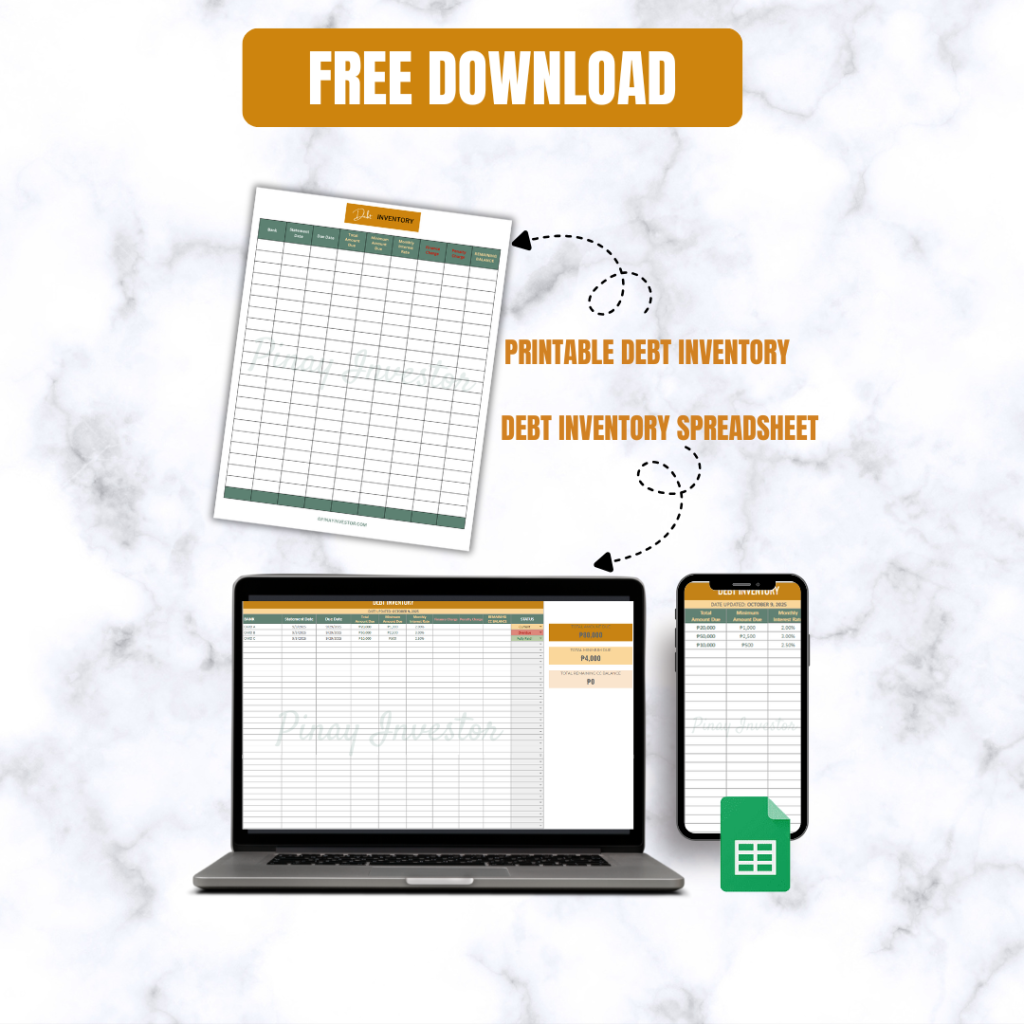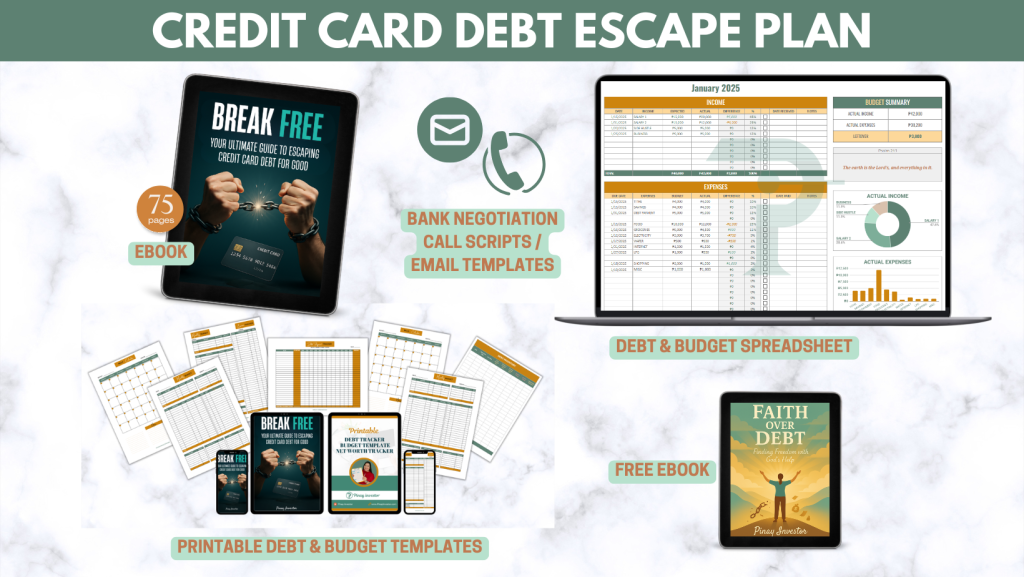You’ve been paying faithfully, but lately, it feels impossible to keep up.
The minimums are eating your whole paycheck, and collectors won’t stop calling.
Then you hear about something called a “debt settlement” — a way to reduce your balance and finally close your account for less than what you owe.
But how does it really work in the Philippines?
And what should you say when you call the bank?
If you’ve been carrying this burden quietly, this guide will walk you through what debt settlement means, how to negotiate it properly, and how to protect yourself along the way.
What Is a Debt Settlement?
Debt settlement is a negotiation between you and your bank (or a collection agency) where you agree to pay a reduced amount to settle your total balance.
It’s often offered to cardholders who:
-
Have fallen behind for several months
-
Can no longer pay the full amount
-
Are willing to settle the debt one-time or through a short-term plan
For example, if you owe ₱100,000, your bank might offer to close the account for ₱60,000 — or let you pay that amount in two to three monthly installments. Once you complete it, the remaining ₱40,000 is considered forgiven.
It’s not a magic fix, but it’s a real, legal, and often effective option if you handle it correctly.
What Happens When You Negotiate
Most debt settlements in the Philippines start after several months of nonpayment. By this time, your account is likely classified as “past due” or “charged off.”
When that happens, the bank’s goal shifts — they just want to recover whatever they can, even if it’s not the full amount. That’s when settlement offers come into play.
You might receive calls or letters saying:
“We can offer a 40% discount if you settle your account this month.”
“Avail our one-time payment program to close your account in good standing.”
These offers are negotiable. You can ask for more time, a bigger discount, or a staggered plan — but you need to do it smartly.
Before You Negotiate: Prepare Your Numbers

Don’t pick up the phone unprepared. Here’s what to do first:
-
List all your credit cards and balances.
Use my free Debt Inventory Tracker to organize everything in one sheet.
Note the bank, total balance, minimum due, and months behind.
-
Decide your maximum offer.
Be realistic about what you can actually pay.
If you can gather ₱30,000 in cash, you can offer that as a one-time settlement. -
Keep calm and professional.
The person on the other line is doing their job — you’ll get better results if you stay polite, respectful, and clear about your situation.
What to Say When You Call the Bank
Here’s a sample script you can use when reaching out to your bank or the collection agency:
You: “Good day. I’m calling about my credit card account. I want to settle my balance but I’m currently struggling financially. I’d like to ask if there are available settlement or restructuring programs that can help me pay.”
Collector or Bank Rep: (They may ask for your account details or reason for delay.)
You: “I lost some income recently, but I want to close this account in good faith. I can raise ₱____ right now. Can we work out a discounted one-time payment or a short-term plan to fully settle it?”
If they offer a discount that’s still too high:
“Thank you. That’s helpful, but the amount is still difficult for me. Is there any possibility of reconsideration or a special promo if I settle within the month?”
If they agree:
“May I please request a written offer or email confirmation showing the exact amount, due date, and that this payment will close the account and release me from any remaining balance?”
Polite persistence works better than anger or fear.
You’re not begging — you’re negotiating for a fair closure.
What to Look For in a Settlement Offer
Before you pay anything, get everything in writing.
The document or email must include:
✅ The total balance and agreed settlement amount
✅ The due date or payment schedule
✅ A statement that says this payment will serve as “full and final settlement”
✅ The account number and your name
✅ The bank or authorized agency’s official letterhead and signature
Once you’ve paid, request a Certificate of Full Payment or Clearance from the bank.
Keep it forever — it’s your proof if any future collector tries to chase you again.
Typical Discounts in the Philippines
Debt settlements vary depending on the bank, the age of your debt, and your relationship with them.
Here’s a general idea based on real local experiences:
| Status | Typical Discount Range | Payment Type |
|---|---|---|
| 3–6 months past due | 10%–30% | One-time or 3-month plan |
| 6–12 months past due | 30%–50% | Usually lump-sum |
| Over 1 year past due | 50%–70% | Lump-sum or short plan |
The older the debt, the higher the discount they may offer.
But older debts also carry more risk, like inaccurate records or third-party errors, so always verify with the original bank before paying.
What to Avoid During Negotiation
❌ Never pay without a written agreement. Collectors who ask for “reservation fees” or “down payments” before sending a letter are red flags.
❌ Avoid sending personal documents right away. Don’t share IDs or payslips unless you’re dealing directly with the bank or a verified agency.
❌ Don’t believe in threats. If someone says, “We’ll send a sheriff” or “We’ll file a case tomorrow,” stay calm. Those are scare tactics — no one goes to jail for credit card debt.
Read: Can You Go to Jail for Credit Card Debt in the Philippines?
When Settlement Isn’t Possible
If you can’t afford a one-time payment, ask about other bank-assisted options, such as:
-
Balance Conversion: Converts your total into a fixed-term installment with lower interest.
-
Balance Transfer: Moves your balance to another card with a promo rate (0%–1%).
-
Restructuring: Extends your term to make payments lighter.
These are legitimate programs that reduce your stress and protect your credit standing better than ignoring the debt.
How Settlement Affects Your Credit Report
A settled account will still show up in your Credit Information Corporation (CIC) report, often marked as “Settled” or “Closed with Balance Discounted.”
That’s not as damaging as “Unpaid” or “Default,” but it may still affect your score temporarily.
Over time, as you rebuild your financial habits, that mark will matter less, especially if you maintain good payment history in the future.
Remember: short-term mark, long-term peace.
Emotional Reminder: You’re Not a Failure
Negotiating debt doesn’t make you weak or irresponsible. It makes you brave enough to face the truth.
Many Filipinos are silently carrying the same burden. Some are juggling multiple cards, some lost jobs, others faced medical or family crises.
Life happens. What matters is that you’re choosing to face it head-on now.
The goal isn’t perfection. It’s progress—one call, one payment, one small win at a time.
Take the Next Step
If you’re ready to start negotiating, equip yourself with the right tools and knowledge.
-
Download your Free Debt Inventory Tracker to organize your debts before calling any bank.
-
Read Break Free: Your Ultimate Guide to Escaping Credit Card Debt for Good — it includes ready-to-use email templates, negotiation scripts, and 13 strategies to pay off debt faster.
You don’t have to face collectors unprepared. You just need clarity, courage, and the right words.
Start your call and start taking your freedom back today.


